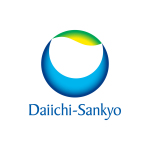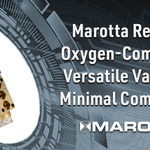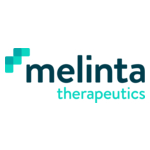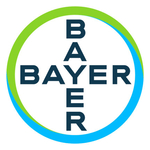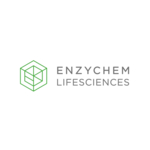- CARVYKTI™ marks the first product approved by a health authority for Legend Biotech
- Approval is primarily based on the pivotal phase 1b/2 CARTITUDE-1 study, which demonstrated an overall response rate (ORR) of 98 percent in patients with refractory or relapsed multiple myeloma after four or more prior lines of therapy including proteasome inhibitor, immunomodulatory agent and anti-CD38 monoclonal antibody1
SOMERSET, N.J. — (BUSINESS WIRE) — $LEGN–Legend Biotech Corporation (NASDAQ: LEGN) (Legend Biotech), a global biotechnology company developing, manufacturing and commercializing novel therapies to treat life-threatening diseases, today announced that the U.S. Food and Drug Administration (FDA) has approved its first product, CARVYKTI™ (ciltacabtagene autoleucel; cilta-cel), for the treatment of adults with relapsed or refractory multiple myeloma (RRMM) who have received four or more prior lines of therapy, including a proteasome inhibitor, an immunomodulatory agent, and an anti-CD38 monoclonal antibody. Legend Biotech entered into an exclusive worldwide license and collaboration agreement with Janssen Biotech, Inc. (Janssen) to develop and commercialize cilta-cel in December 2017.
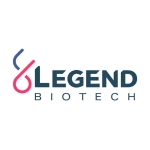
CARVYKTI™ is a chimeric antigen receptor T-cell (CAR-T) therapy with two B-cell maturation antigen (BCMA)-targeting single domain antibodies and given as a one-time infusion with a recommended dose range of 0.5 to 1.0 x 106 CAR-positive viable T cells per kg of body weight. In the pivotal CARTITUDE-1 study, deep and durable responses were seen in patients with RRMM (n=97), with a high overall response rate (ORR) of 98 percent (95 percent confidence interval [CI]: 92.7-99.7) including 78 percent of the patients achieving stringent complete response (sCR, 95 percent CI: 68.8-86.1).1 At a median of 18 months follow-up, the median duration of response (DOR) was 21.8 months (95 percent CI 21.8-not estimable).1
CARVYKTI™ is available only through a restricted program under a Risk Evaluation and Mitigation Strategy (REMS) called the CARVYKTI™ REMS Program.1 The Safety Information for CARVYKTI™ includes a Boxed Warning regarding Cytokine Release Syndrome (CRS), Immune Effector Cell-Associated Neurotoxicity Syndrome (ICANS), Parkinsonism and Guillain-Barré syndrome, hemophagocytic lymphohistiocytosis/macrophage activation syndrome (HLH/MAS), and prolonged and/or recurrent cytopenia.1 Warnings and Precautions include prolonged and recurrent cytopenias, infections, hypogammaglobulinemia, hypersensitivity reactions, secondary malignancies and effects on ability to drive and use machines.1 The most common adverse reactions (≥20 percent) are pyrexia, CRS, hypogammaglobulinemia, hypotension, musculoskeletal pain, fatigue, infections-pathogen unspecified, cough, chills, diarrhea, nausea, encephalopathy, decreased appetite, upper respiratory tract infection, headache, tachycardia, dizziness, dyspnea, edema, viral infections, coagulopathy, constipation, and vomiting.1
“Multiple myeloma remains an incurable disease with heavily pretreated patients facing poor prognoses with limited treatment options,” said Ying Huang, PhD, CEO and CFO of Legend Biotech. “Today’s approval of CARVYKTI is a pivotal moment for Legend Biotech because it is our first-ever marketing approval, but what really excites us is the drug’s potential to become an impactful therapy option for patients in need of long, treatment-free intervals. This is the first of many cell therapies we plan to bring to patients as we continue advancing our pipeline across disease states.”
Multiple myeloma affects a type of white blood cell called plasma cells, which are found in the bone marrow.2 The majority of patients relapse after undergoing initial treatment and face poor prognoses after treatment with three major drug classes, including immunomodulatory agent, a proteasome inhibitor and anti-CD38 monoclonal antibody.3,4,5
“The treatment journey for the majority of patients living with multiple myeloma is a relentless cycle of remission and relapse with fewer patients achieving a deep response as they progress through later lines of therapy,” said Dr. Sundar Jagannath, MBBS, Professor of Medicine, Hematology and Medical Oncology at Mount Sinai, and principal study investigator. “This is why I have been really excited about the results from the CARTITUDE-1 study, which has demonstrated that cilta-cel can provide deep and durable responses and long-term treatment-free intervals, even in this heavily pretreated multiple myeloma patient population. Today’s approval of CARVYKTI helps address a great unmet need for these patients.”
As a personalized medicine, CARVYKTI™’s administration requires extensive training, preparation, and certification to ensure a seamless experience for patients. Through a phased approach, Legend and Janssen will activate a limited network of certified treatment centers as they work to scale production capacity and increase the availability of CARVYKTI™ throughout the U.S. in 2022 and beyond, ensuring that the CARVYKTI™ treatment can be provided to oncologists and their patients in a reliable and timely manner.
About CARVYKTI™ (Ciltacabtagene autoleucel; cilta-cel)
CARVYKTI™ is a BCMA-directed, genetically modified autologous T-cell immunotherapy, which involves reprogramming a patient’s own T-cells with a transgene encoding a chimeric antigen receptor (CAR) that identifies and eliminates cells that express BCMA. BCMA is primarily expressed on the surface of malignant multiple myeloma B-lineage cells, as well as late-stage B-cells and plasma cells. The CARVYKTI™ CAR protein features two BCMA-targeting single domain antibodies designed to confer high avidity against human BCMA. Upon binding to BCMA-expressing cells, the CAR promotes T-cell activation, expansion, and elimination of target cells.1
In December 2017, Legend Biotech Corporation entered into an exclusive worldwide license and collaboration agreement with Janssen Biotech, Inc. to develop and commercialize cilta-cel.
In April 2021, Legend announced the submission of a Marketing Authorisation Application to the European Medicines Agency seeking approval of cilta-cel for the treatment of patients with relapsed and/or refractory multiple myeloma. In addition to U.S. Breakthrough Therapy Designation granted in December 2019, cilta-cel received a Breakthrough Therapy Designation in China in August 2020. Cilta-cel also received Orphan Drug Designation from the U.S. FDA in February 2019, and from the European Commission in February 2020.
About the CARTITUDE-1 Study
CARTITUDE-1 (NCT03548207) is an ongoing Phase 1b/2, open-label, single arm, multi-center trial evaluating cilta-cel for the treatment of adult patients with relapsed or refractory multiple myeloma, who previously received at least three prior lines of therapy including a proteasome inhibitor (PI), an immunomodulatory agent (IMiD) and an anti-CD38 monoclonal antibody. Of the 97 patients enrolled in the trial, 99 percent were refractory to the last line of treatment and 88 percent were triple-class refractory, meaning their cancer did not respond, or no longer responds, to an IMiD, a PI and an anti-CD38 monoclonal antibody.1
The longer-term efficacy and safety profile of cilta-cel is being assessed in the ongoing CARTITUDE-1 study, with two-year follow-up results recently presented at ASH 2021.6
About Multiple Myeloma
Multiple myeloma is an incurable blood cancer that starts in the bone marrow and is characterized by an excessive proliferation of plasma cells.2 In 2022, it is estimated that more than 34,000 people will be diagnosed with multiple myeloma, and more than 12,000 people will die from the disease in the U.S.7 While some patients with multiple myeloma have no symptoms at all, most patients are diagnosed due to symptoms that can include bone problems, low blood counts, calcium elevation, kidney problems or infections.8 Although treatment may result in remission, unfortunately, patients will most likely relapse.3 Patients who relapse after treatment with standard therapies, including protease inhibitors, immunomodulatory agents, and an anti-CD38 monoclonal antibody, have poor prognoses and few treatment options available.4,5
CARVYKTI™ Important Safety Information
INDICATIONS AND USAGE
CARVYKTI™ (ciltacabtagene autoleucel) is a B-cell maturation antigen (BCMA)-directed genetically modified autologous T cell immunotherapy indicated for the treatment of adult patients with relapsed or refractory multiple myeloma, after four or more prior lines of therapy, including a proteasome inhibitor, an immunomodulatory agent, and an anti-CD38 monoclonal antibody.
WARNING: CYTOKINE RELEASE SYNDROME, NEUROLOGIC TOXICITIES, HLH/MAS, and PROLONGED and RECURRENT CYTOPENIA
- Cytokine Release Syndrome (CRS), including fatal or life-threatening reactions, occurred in patients following treatment with CARVYKTI™. Do not administer CARVYKTI™ to patients with active infection or inflammatory disorders. Treat severe or life-threatening CRS with tocilizumab or tocilizumab and corticosteroids.
- Immune Effector Cell-Associated Neurotoxicity Syndrome (ICANS), which may be fatal or life-threatening, occurred following treatment with CARVYKTI™, including before CRS onset, concurrently with CRS, after CRS resolution, or in the absence of CRS. Monitor for neurologic events after treatment with CARVYKTI™. Provide supportive care and/or corticosteroids as needed.
- Parkinsonism and Guillain-Barré syndrome and their associated complications resulting in fatal or life-threatening reactions have occurred following treatment with CARVYKTI™.
- Hemophagocytic Lymphohistiocytosis/Macrophage Activation Syndrome (HLH/MAS), including fatal and life-threatening reactions, occurred in patients following treatment with CARVYKTI™. HLH/MAS can occur with CRS or neurologic toxicities.
- Prolonged and/or recurrent cytopenias with bleeding and infection and requirement for stem cell transplantation for hematopoietic recovery occurred following treatment with CARVYKTI™.
- CARVYKTI™ is available only through a restricted program under a Risk Evaluation and Mitigation Strategy (REMS) called the CARVYKTI™ REMS Program.
WARNINGS AND PRECAUTIONS
Cytokine Release Syndrome (CRS) including fatal or life-threatening reactions, occurred following treatment with CARVYKTI™ in 95% (92/97) of patients receiving ciltacabtagene autoleucel. Grade 3 or higher CRS (2019 ASTCT grade)1 occurred in 5% (5/97) of patients, with Grade 5 CRS reported in 1 patient. The median time to onset of CRS was 7 days (range: 1-12 days). The most common manifestations of CRS included pyrexia (100%), hypotension (43%), increased aspartate aminotransferase (AST) (22%), chills (15%), increased alanine aminotransferase (14%) and sinus tachycardia (11%). Grade 3 or higher events associated with CRS included increased AST and ALT, hyperbilirubinemia, hypotension, pyrexia, hypoxia, respiratory failure, acute kidney injury, disseminated intravascular coagulation, HLH/MAS, angina pectoris, supraventricular and ventricular tachycardia, malaise, myalgias, increased C-reactive protein, ferritin, blood alkaline phosphatase and gamma-glutamyl transferase.
Identify CRS based on clinical presentation. Evaluate for and treat other causes of fever, hypoxia, and hypotension. CRS has been reported to be associated with findings of HLH/MAS, and the physiology of the syndromes may overlap. HLH/MAS is a potentially life-threatening condition. In patients with progressive symptoms of CRS or refractory CRS despite treatment, evaluate for evidence of HLH/MAS.
Sixty-nine of 97 (71%) patients received tocilizumab and/or a corticosteroid for CRS after infusion of ciltacabtagene autoleucel. Forty-four (45%) patients received only tocilizumab, of whom 33 (34%) received a single dose and 11 (11%) received more than one dose; 24 patients (25%) received tocilizumab and a corticosteroid, and one patient (1%) received only corticosteroids. Ensure that a minimum of two doses of tocilizumab are available prior to infusion of CARVYKTI™.
Monitor patients at least daily for 10 days following CARVYKTI™ infusion at a REMS-certified healthcare facility for signs and symptoms of CRS. Monitor patients for signs or symptoms of CRS for at least 4 weeks after infusion. At the first sign of CRS, immediately institute treatment with supportive care, tocilizumab, or tocilizumab and corticosteroids. Counsel patients to seek immediate medical attention should signs or symptoms of CRS occur at any time.
Neurologic toxicities, which may be severe, life-threatening or fatal, occurred following treatment with CARVYKTI™. Neurologic toxicities included ICANS, neurologic toxicity with signs and symptoms of parkinsonism, Guillain-Barré Syndrome, peripheral neuropathies, and cranial nerve palsies. Counsel patients on the signs and symptoms of these neurologic toxicities, and on the delayed nature of onset of some of these toxicities. Instruct patients to seek immediate medical attention for further assessment and management if signs or symptoms of any of these neurologic toxicities occur at any time.
Overall, one or more subtypes of neurologic toxicity described below occurred following ciltacabtagene autoleucel in 26% (25/97) of patients, of which 11% (11/97) of patients experienced Grade 3 or higher events. These subtypes of neurologic toxicities were also observed in two ongoing studies.
Immune Effector Cell-Associated Neurotoxicity Syndrome (ICANS): ICANS occurred in 23% (22/97) of patients receiving ciltacabtagene autoleucel including Grade 3 or 4 events in 3% (3/97) and Grade 5 (fatal) events in 2% (2/97). The median time to onset of ICANS was 8 days (range 1-28 days). All 22 patients with ICANS had CRS. The most frequent (≥5%) manifestation of ICANS included encephalopathy (23%), aphasia (8%) and headache (6%).
Monitor patients at least daily for 10 days following CARVYKTI™ infusion at the REMS-certified healthcare facility for signs and symptoms of ICANS. Rule out other causes of ICANS symptoms. Monitor patients for signs or symptoms of ICANS for at least 4 weeks after infusion and treat promptly. Neurologic toxicity should be managed with supportive care and/or corticosteroids as needed.
Parkinsonism: Of the 25 patients in the CARTITUDE-1 study experiencing any neurotoxicity, five male patients had neurologic toxicity with several signs and symptoms of parkinsonism, distinct from immune effector cell-associated neurotoxicity syndrome (ICANS). Neurologic toxicity with parkinsonism has been reported in other ongoing trials of ciltacabtagene autoleucel. Patients had parkinsonian and non-parkinsonian symptoms that included tremor, bradykinesia, involuntary movements, stereotypy, loss of spontaneous movements, masked facies, apathy, flat affect, fatigue, rigidity, psychomotor retardation, micrographia, dysgraphia, apraxia, lethargy, confusion, somnolence, loss of consciousness, delayed reflexes, hyperreflexia, memory loss, difficulty swallowing, bowel incontinence, falls, stooped posture, shuffling gait, muscle weakness and wasting, motor dysfunction, motor and sensory loss, akinetic mutism, and frontal lobe release signs. The median onset of parkinsonism in the 5 patients in CARTITUDE-1 was 43 days (range 15-108) from infusion of ciltacabtagene autoleucel.
Monitor patients for signs and symptoms of parkinsonism that may be delayed in onset and managed with supportive care measures. There is limited efficacy information with medications used for the treatment of Parkinson’s disease, for the improvement or resolution of parkinsonism symptoms following CARVYKTI™ treatment.
Guillain-Barré Syndrome: A fatal outcome following Guillain-Barré Syndrome (GBS) has occurred in another ongoing study of ciltacabtagene autoleucel despite treatment with intravenous immunoglobulins. Symptoms reported include those consistent with Miller-Fisher variant of GBS, encephalopathy, motor weakness, speech disturbances and polyradiculoneuritis.
Monitor for GBS. Evaluate patients presenting with peripheral neuropathy for GBS. Consider treatment of GBS with supportive care measures and in conjunction with immunoglobulins and plasma exchange, depending on severity of GBS.
Peripheral Neuropathy: Six patients in CARTITUDE-1 developed peripheral neuropathy. These neuropathies presented as sensory, motor or sensorimotor neuropathies. Median time of onset of symptoms was 62 days (range 4-136 days), median duration of peripheral neuropathies was 256 days (range 2-465 days) including those with ongoing neuropathy. Patients who experienced peripheral neuropathy also experienced cranial nerve palsies or GBS in other ongoing trials of ciltacabtagene autoleucel.
Cranial Nerve Palsies: Three patients (3.1%) experienced cranial nerve palsies in CARTITUDE-1. All three patients had 7th cranial nerve palsy; one patient had 5th cranial nerve palsy as well. Median time to onset was 26 days (range 21-101 days) following infusion of ciltacabtagene autoleucel. Occurrence of 3rd and 6th cranial nerve palsy, bilateral 7th cranial nerve palsy, worsening of cranial nerve palsy after improvement, and occurrence of peripheral neuropathy in patients with cranial nerve palsy have also been reported in ongoing trials of ciltacabtagene autoleucel. Monitor patients for signs and symptoms of cranial nerve palsies. Consider management with systemic corticosteroids, depending on the severity and progression of signs and symptoms.
Hemophagocytic Lymphohistiocytosis (HLH)/Macrophage Activation Syndrome (MAS): Fatal HLH occurred in one patient (1%), 99 days after ciltacabtagene autoleucel. The HLH event was preceded by prolonged CRS lasting 97 days. The manifestations of HLH/MAS include hypotension, hypoxia with diffuse alveolar damage, coagulopathy, cytopenia, and multi-organ dysfunction, including renal dysfunction. HLH is a life-threatening condition with a high mortality rate if not recognized and treated early. Treatment of HLH/MAS should be administered per institutional standards.
CARVYKTI™ REMS: Because of the risk of CRS and neurologic toxicities, CARVYKTI™ is available only through a restricted program under a Risk Evaluation and Mitigation Strategy (REMS) called the CARVYKTI™ REMS.
Further information is available at www.CARVYKTIrems.com or 1-844-672-0067.
Prolonged and Recurrent Cytopenias: Patients may exhibit prolonged and recurrent cytopenias following lymphodepleting chemotherapy and CARVYKTI™ infusion. One patient underwent autologous stem cell therapy for hematopoietic reconstitution due to prolonged thrombocytopenia.
In CARTITUDE-1, 30% (29/97) of patients experienced prolonged Grade 3 or 4 neutropenia and 41% (40/97) of patients experienced prolonged Grade 3 or 4 thrombocytopenia that had not resolved by Day 30 following ciltacabtagene autoleucel infusion.
Recurrent Grade 3 or 4 neutropenia, thrombocytopenia, lymphopenia and anemia were seen in 63% (61/97), 18% (17/97), 60% (58/97), and 37% (36/97) after recovery from initial Grade 3 or 4 cytopenia following infusion. After Day 60 following ciltacabtagene autoleucel infusion, 31%, 12% and 6% of patients had a recurrence of Grade 3 or higher lymphopenia, neutropenia and thrombocytopenia, respectively, after initial recovery of their Grade 3 or 4 cytopenia. Eighty-seven percent (84/97) of patients had one, two, or three or more recurrences of Grade 3 or 4 cytopenias after initial recovery of Grade 3 or 4 cytopenia. Six and 11 patients had Grade 3 or 4 neutropenia and thrombocytopenia, respectively, at the time of death.
Monitor blood counts prior to and after CARVYKTI™ infusion. Manage cytopenias with growth factors and blood product transfusion support according to local institutional guidelines.
Infections: CARVYKTI™ should not be administered to patients with active infection or inflammatory disorders. Severe, life-threatening or fatal infections occurred in patients after CARVYKTI™ infusion.
Infections (all grades) occurred in 57 (59%) patients. Grade 3 or 4 infections occurred in 23% (22/97) of patients; Grade 3 or 4 infections with an unspecified pathogen occurred in 17%, viral infections in 7%, bacterial infections in 1%, and fungal infections in 1% of patients. Overall, four patients had Grade 5 infections: lung abscess (n=1), sepsis (n=2) and pneumonia (n=1).
Monitor patients for signs and symptoms of infection before and after CARVYKTI™ infusion and treat patients appropriately. Administer prophylactic, pre-emptive and/or therapeutic antimicrobials according to the standard institutional guidelines. Febrile neutropenia was observed in 10% of patients after ciltacabtagene autoleucel infusion, and may be concurrent with CRS. In the event of febrile neutropenia, evaluate for infection and manage with broad-spectrum antibiotics, fluids and other supportive care, as medically indicated.
Viral Reactivation: Hepatitis B virus (HBV) reactivation, in some cases resulting in fulminant hepatitis, hepatic failure and death, can occur in patients with hypogammaglobulinemia. Perform screening for Cytomegalovirus (CMV), HBV, hepatitis C virus (HCV), and human immunodeficiency virus (HIV), or any other infectious agents if clinically indicated in accordance with clinical guidelines before collection of cells for manufacturing. Consider antiviral therapy to prevent viral reactivation per local institutional guidelines/clinical practice.
Hypogammaglobulinemia was reported as an adverse event in 12% (12/97) of patients; laboratory IgG levels fell below 500 mg/dL after infusion in 92% (89/97) of patients. Monitor immunoglobulin levels after treatment with CARVYKTI™ and administer IVIG for IgG <400 mg/dL. Manage per local institutional guidelines, including infection precautions and antibiotic or antiviral prophylaxis.
Use of Live Vaccines: The safety of immunization with live viral vaccines during or following CARVYKTI™ treatment has not been studied. Vaccination with live virus vaccines is not recommended for at least 6 weeks prior to the start of lymphodepleting chemotherapy, during CARVYKTI™ treatment, and until immune recovery following treatment with CARVYKTI™.
Hypersensitivity Reactions have occurred in 5% (5/97) of patients following ciltacabtagene autoleucel infusion. Serious hypersensitivity reactions, including anaphylaxis, may be due to the dimethyl sulfoxide (DMSO) in CARVYKTI™. Patients should be carefully monitored for 2 hours after infusion for signs and symptoms of severe reaction. Treat promptly and manage appropriately according to the severity of the hypersensitivity reaction.
Secondary Malignancies: Patients may develop secondary malignancies. Monitor life-long for secondary malignancies. In the event that a secondary malignancy occurs, contact Janssen Biotech, Inc., at 1-800-526-7736 for reporting and to obtain instructions on collection of patient samples for testing of secondary malignancy of T cell origin.
Effects on Ability to Drive and Use Machines: Due to the potential for neurologic events, including altered mental status, seizures, neurocognitive decline, or neuropathy, patients are at risk for altered or decreased consciousness or coordination in the 8 weeks following CARVYKTI™ infusion.
Contacts
Investors:
Joanne Choi, Senior Manager of Investor Relations, Legend Biotech
Joanne.choi@legendbiotech.com
Crystal Chen, Manager of Investor Relations, Legend Biotech
crystal.chen@legendbiotech.com
Press:
Tina Carter, Corporate Communications Lead, Legend Biotech
tina.carter@legendbiotech.com
(908) 331-5025
Read full story here
